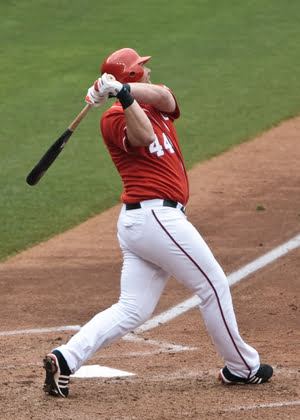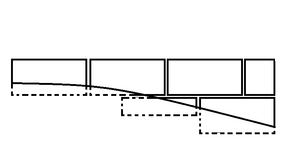Doubles Eight Ball or Nine Ball
This is the most straightforward of pool games for four people. Two teams are made of two people each (or one pair and one person playing solo, if there are only three people). One person on a team shoots, continuing until they miss a shot or the game ends. During the next team’s turn, the person who did not shoot before then plays.
Scotch Doubles Eight Ball or Nine Ball
As in a standard doubles game, two teams are formed before the start of the game. In this variant, though, teammates alternate shots even during a single time at the table. Say Bill and Sue are on a team, and it is their turn. Bill shoots first, and pockets a ball. It is still their turn but, rather than Bill continuing at the table, it is then Sue’s turn. If she pockets a ball as well, then play will return to Bill. Once one of them misses a shot, the other team takes their turn at the table in the same manner. When it is Bill and Sue’s turn once again, play resumes in the same order. Say if Bill missed his shot, giving the other team a turn, Sue will shoot first next time. Scotch doubles is more challenging than standard doubles, as not only does each person have to be concerned with making their own shot, but also with where they leave the cue ball for their partner’s following shot.
Team Eight Ball or Nine Ball
Unlike doubles, teams can be formed with any number of people, but usually three to five works best, as long as the two teams have the same number of players. Also unlike doubles, each game is played with only a single person from each team.
Before the first game order of play for each team is decided, and one team is designated the home team while the other is the visiting team. The home team’s order remains the same throughout the entire match. After each player has played once, though, the visiting team’s order changes for the next round. The second player shoots first the next round; the third person shoots second, and so on until everyone has once again played. This will ensure that each person on one team will play each person on the other once. For each game a player wins, that team gets a point. The game can continue until a team gets a designated number of points, or until each player on one team has played every player on the other team. Usually for teams of three or four, the latter will be the case as only nine or sixteen games are played, respectively. For teams of five, often it is a race to nine, as twenty-five games would be played if no limit was set. With a race to nine, it is still possible to play up to seventeen games, if the teams with eight wins..
Cutthroat
Cutthroat works best with either three or five people. For three people, the balls are divided into three groups: 1-5, 6-10, and 11-15 (lows, mids, and highs, respectively). For five people, they are divided into: 1-3, 4-6, 7-9, 10-12, and 13-15. The goal of the game is to be the last player with balls remaining on the table. If a player has 1-5, that player would want all the balls from 6-15 pocketed, while still having one or more from 1-5 remaining on the table.
The fifteen balls are racked and broken normally. Each player takes turns taking a shot, until a ball is made. The person that makes the first shot gets to determine which set of balls they want. After deciding, their turn continues until a shot is missed. The players continue to take turns, choosing a set of balls each time a shot is made by a player who has not claimed one yet (and there are at least two sets remaining). When only one set remains, it is given to the player who has yet to choose a set.
If someone scratches, and the balls are available, each other player may take one of their pocketed balls and return it to the table. These balls are placed on the head-spot, forming a line toward the end of the table when multiple balls are involved. When a player has no balls of their set left on the table, their turn is skipped. They are out of the game, unless another player scratches and one of their balls is returned to the table.
Three Ball
Unlike cutthroat, Three Ball works well with any number of players. An order is decided beforehand – we usually write numbers on scraps of paper and draw. Turns are taken with only one person playing at the table at a time, until they are done. Three balls are racked in a triangle at the head-spot and broken. The count is then at one. Shots are then made until all the balls are pocketed, with each shot adding one to the count. If no balls were made on the break, for instance, and one ball was pocketed each shot after with no misses, the final count would be four (one for the break, and one for each ball). Scratches add one to the count, along with one for the shot itself – after the scratch, the cue ball is played from the kitchen. After the first person pockets all three balls, play is repeated for the next person, and so on until everyone has had a turn at the table. The winner is the player who, after everyone has had a turn at the table, has the lowest final count. In the case of a tie, everyone is considered tied for the round. The counts for that round are forgotten, and a new round is played until a round is finished with a sole winner.
Three ball is a great group game. For one, any number of players can join in. Several times we have started a game with only three people and, before long, ended up with over ten simply by attracting people who happened to be walking by. Even with that many people, play is fast, and everyone can get to the table in a timely manner. It is also a very economy-friendly game, as five people can each have a turn in a round using only a single rack of balls.


